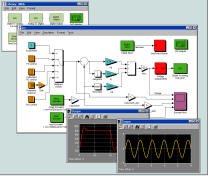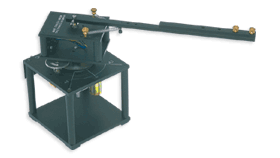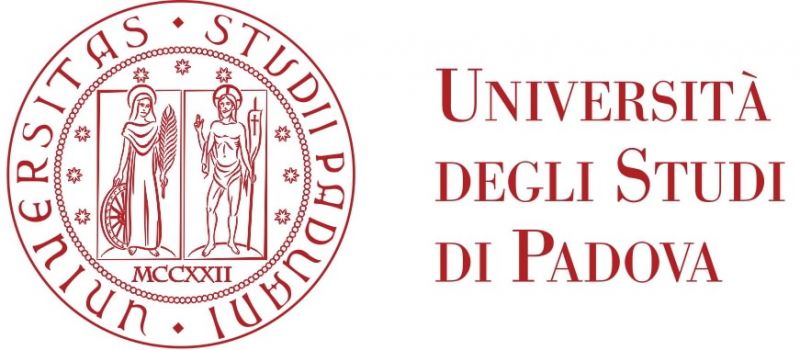

 |
Control Laboratory
a.a. 2015-2016 Laurea Magistrale in Ingegneria dell'Automazione |
 |
| Instructor and collaborators |
Prof. Luca Schenato
Phone: 049 827 7925
Office: 315 DEI/A (3rd floor)
E-mail: ![]() ( NO
luca.schenato@dei.unipd.it !!!!)
( NO
luca.schenato@dei.unipd.it !!!!)
Webpage: http://automatica.dei.unipd.it/people/schenato.html
Office Hours: by email or phone
Eng. Riccardo Antonello
Phone: 049 827 7642
Office: 2nd floor DEI/A
E-mail: riccardo.antonello@dei.unipd.it
Webpage: http://www.webalice.it/riccardo.antonello/website/Home.html
Office Hours: by email or phone
Eng. Marco Todescato
Office: 3rd floor DEI/A
E-mail: marco.todescato@dei.unipd.it
Webpage: http://automatica.dei.unipd.it/people/todescato.html
Office Hours: by email or phone
| Description |
| Lectures |
Each lecture is provided with a link to textbook pages or PDF files.
| WEEK |
TUESDAY (10:30-12:15 room Ce) |
WEDNESDAY (10:30-12:15 room Ee) |
THURSDAY (12:30-14:15 room Le) |
FRIDAY (12:30-16:15 Control Lab) |
|
1 (1-3/03) |
Introduction to the course (Lezione 1) (Lecture 1) |
Overview of signal and systems. Representation o dynamical systems (Lezione 2) (Lecture 2) |
Sensors and Actuators Modeling (Lezione 3) (Lecture 3) |
|
|
2 (8-10/03) |
II order systems: representation and characteristics (Lezione 3) (Lecture 4) | Fundamental properties of control: disturbance rejection and model parameter sensitivity (Lecture 5) |
MATLAB and SIMULINK (laboratorio): Part I (Eng. Riccardo Antonello) |
|
|
3 (15-17/03) |
Approximation of (stable) dynamical systems with II order systems (Lezione 6) (Lecture 6) | MATLAB and SIMULINK (laboratorio): Part II (Eng. Riccardo Antonello) |
VISIT TO CONTROL LABORATORY (Eng. Riccardo Antonello) |
|
|
4 (22-23/03) |
Fundamentals of frequency domain desing: part II (Lezione 7) (Lecture 7) | PID Design (Lecture 8) | NO LECTURE | |
|
5 (30-31/03) |
NO LECTURE |
PID configurations and anti-wind up (Lezione 8) (Lecture 10) |
||
|
6 (5-7/04) |
Fundamentals of Moder Control Theory: reachability and controllability (Lezione 9) (Lecture 11) | State feedback control desing. Feedforward control (Lezione 10) (Lecture 12) | Integral control (Lezione 11) (Lecture 13) | LAB 1: PID control design |
|
7 (12-14/04) |
Internal model principle (Lezione 12) (Lecture 14) |
Observers design. Regulators (Lezione 13) (Lecture 15) |
Reduced order Observers & example (Lecture 16) |
|
|
8 (19-21/04) |
Discrete time systems: representations (Lezione 14) Design via emulation (Lezione 15) (Lecture 17) | Exact discretization (Lezione 16) (Lecture 18) | Practical implementation of discrete time controllers (Lecture 19 updated 6/5/16) | LAB 2: State-space control design |
|
9 (26-28/04) |
Introduction to LQ control: Hamilton-Jacobi-Bellman and Riccati Equation (Lezione LC2 3) (Lecture 20) | LQ Control: solution of Riccati Equation via the Hamiltonian Matrix: Part I (Lezione LC2 4) (Lecture 21) | LQ Control: solution of Riccati Equation via the Hamiltonian Matrix: Part II (Lezione LC2 5) (Lecture 22) | |
|
10 (3-5/05) |
Properties of Hamiltonian Matrix (Lezione LC2 6) (Lecture 23) | LQ control: root locus (Lezione LC2 7, Lezione LC2 8) (Lecture 24) | LQ control: Weight design (Lezione LC2-10) (Lecture 25) | |
|
11 (10-12/05) |
Modeling of DC motor with flexible joint (Eng. Riccardo Antonello) | LQ control with frequency shaping (Lezione LC2-9) (Lecture 26) | Frequency shaping: examples (Lezione LC2-11 e Sez.6.7 in Note Controllo Ottimo LQ ) (Lecture 27) | LAB 3: digital control |
|
12 (17-19/05) |
LQ control: robustness properties (Lecture 28) | Industrial guest lecture: SIEMENS |
Industrial guest lecture: SALVAGNINI | |
|
13 (26-28/05) |
LAB 4: LQ control LAB 5: extra lab (9/06 and 10/06) |
| Material |
- Blackboard lectures
- PID design in frequency domain [ notes in PDF]
- LQ control and Frequency Shaping [ notes in PDF]
- Guide for the laboratory software (MATLAB's Realtimeworshop toolbox) and hardware [PDF]
- Notes on DC motor modeling, flexible joint modeling, segway modeling [PDF]
- Notes on how to write a good technical report [PDF]
| Laboratory experiments |
- Parameter identification and PID design for a DC electric motor
- State-space control desing for a DC electric motor
- Digital control desing for a DC electric motor
- LQ control design for a DC electric motor with a flexible joint
| Latex templates |
- Templates for Lecture notes
- Templates for final Techicical report

